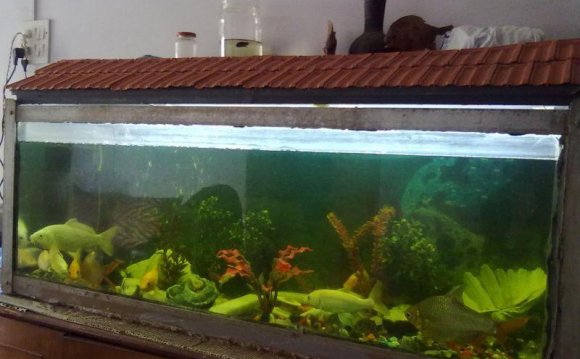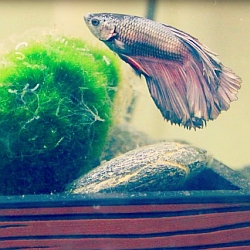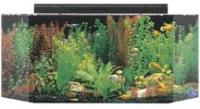
 Betta Fish Center > Betta Breeding > Breeding Betta Fish
Betta Fish Center > Betta Breeding > Breeding Betta Fish
Before breeding your Betta, set some time aside to assess the time, money and physical space you will need. Research as much as you can before you begin so you understand exactly what is required to breed Bettas successfully.
Here are some helpful tips to get you started:
- This can be a difficult task since most stores primarily sell males. Discuss with your fish dealer how to purchase either just the female or a pair.
Observation - Before purchasing the Bettas you wish to breed, observe them in the fish tank. Watch for the fish that are more energetic, for active fish will increase your chances of successful spawning. The best Bettas for breeding are those that are mature and have been conditioned in their respective tanks for at least a few days. Working with several pairs at once allows for trial and error and will nearly ensure success with at least one male and female.
Tank Size - The optimum breeding fish tank size for the pair of Bettas is ten gallons. You will need to add some decorations and plants to allow the fish some privacy; however, avoid using gravel for safety purposes for the female.
Water – Maintain the water temperature at or close to 80 degrees and the depth to 2-3 inches below the rim of the tank. Water filtration is still necessary, but water turbulence can damage the eggs. Adjust the power filter to minimize surface disturbance.
Feeding - Always feed breeding fish a proper, balanced diet. Experienced breeders recommend live brine shrimp and blackworms which help condition the fish for breeding. Continue the Betta’s normal diet of standard flake foods as well as live and frozen foods. To help with conditioning, place the male and female in separate tanks but next to each other with a glass partition between them, and feed them live food simultaneously. Even the sight of the female might provoke the male to begin building its bubblenest.
 Spawning - Once they are both aware of each other and appear ready to spawn, place the female in the same tank as the male. There can be some aggressive gestures, including some mutual fin nipping. If it approaches a dangerous level for either the male or female, remove the female and wait a few days to let the fish recover. Place her in the adjacent tank with the glass partition and begin the process again waiting for signs that she is willing. When they are both ready to spawn they will enter into an “embrace” and she will produce eggs under the bubble nest. He will fertilize them and begin to care for the eggs. At this point in time, remove the female and place her back in her own tank.
Spawning - Once they are both aware of each other and appear ready to spawn, place the female in the same tank as the male. There can be some aggressive gestures, including some mutual fin nipping. If it approaches a dangerous level for either the male or female, remove the female and wait a few days to let the fish recover. Place her in the adjacent tank with the glass partition and begin the process again waiting for signs that she is willing. When they are both ready to spawn they will enter into an “embrace” and she will produce eggs under the bubble nest. He will fertilize them and begin to care for the eggs. At this point in time, remove the female and place her back in her own tank.
Fry - For the next 24 hours until the eggs hatch into fry, the male will keep the eggs cleaned and in the bubble nest, recovering any that fall. The newly born fry will then hang from their tail for another 24-36 hours. Soon, the first fry will begin to swim without help. At this point, remove the male. A day after the fry hatch, they need their first feeding which could consist of baby brine shrimp, daphnia, microworms, or liquid fry food. They'll need to be fed up to five times a day.
Now the fry need to be moved to a larger, covered tank to maintain the humidity and keep the water warm. Estimate moving about 10 fry per gallon container to begin. The fish tank should only contain the growing fry so other aquarium fish do not eat them.
At two months of age, they should begin to show sexual dimorphism, which will allow you to distinguish the males from the females. At this point, remove the males and separate them from each other. You can keep the females together in one tank. Continue feeding your Betta a well-balanced diet and maintain the proper water and temperature conditions, and you will soon have many beautiful Bettas to enjoy.









